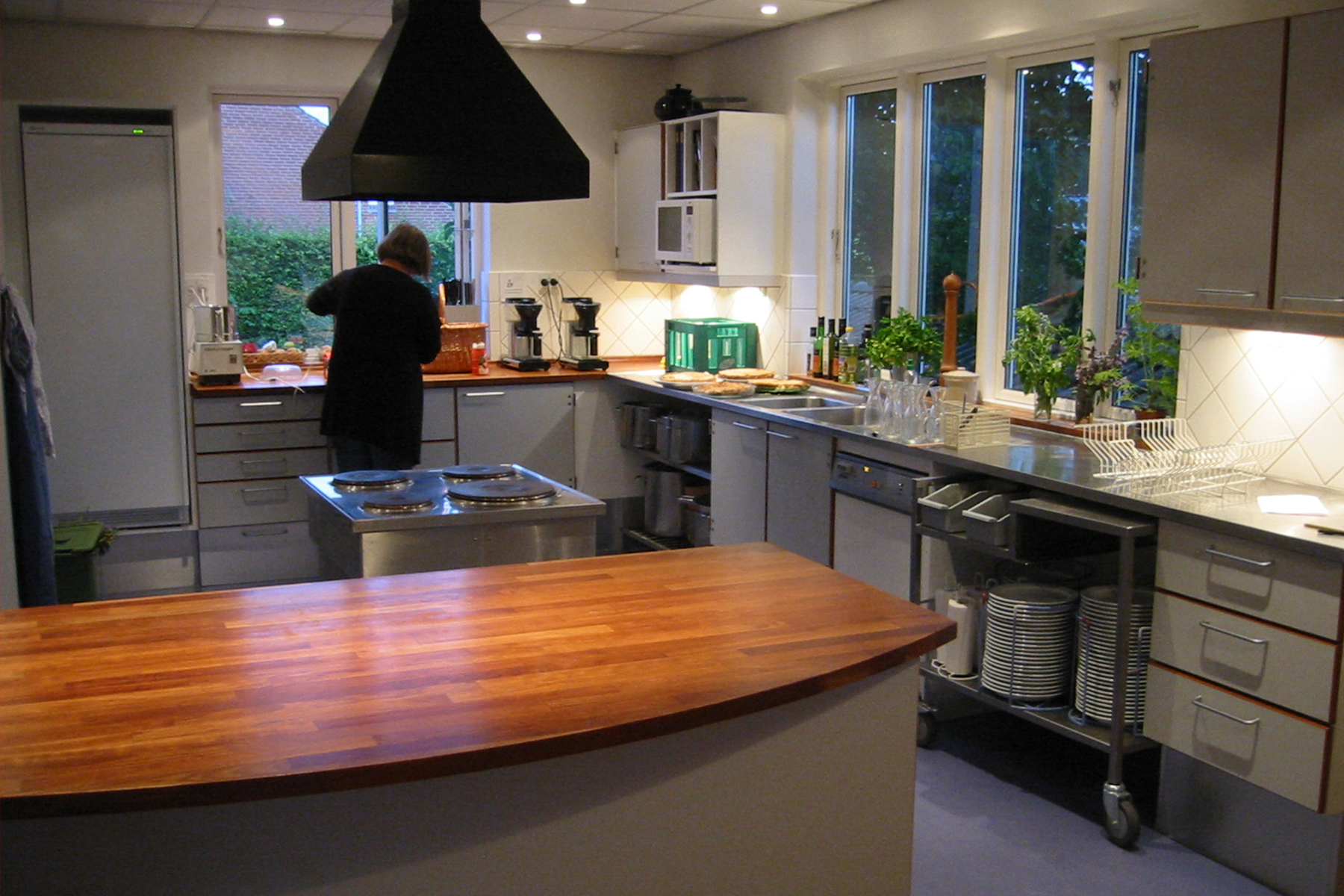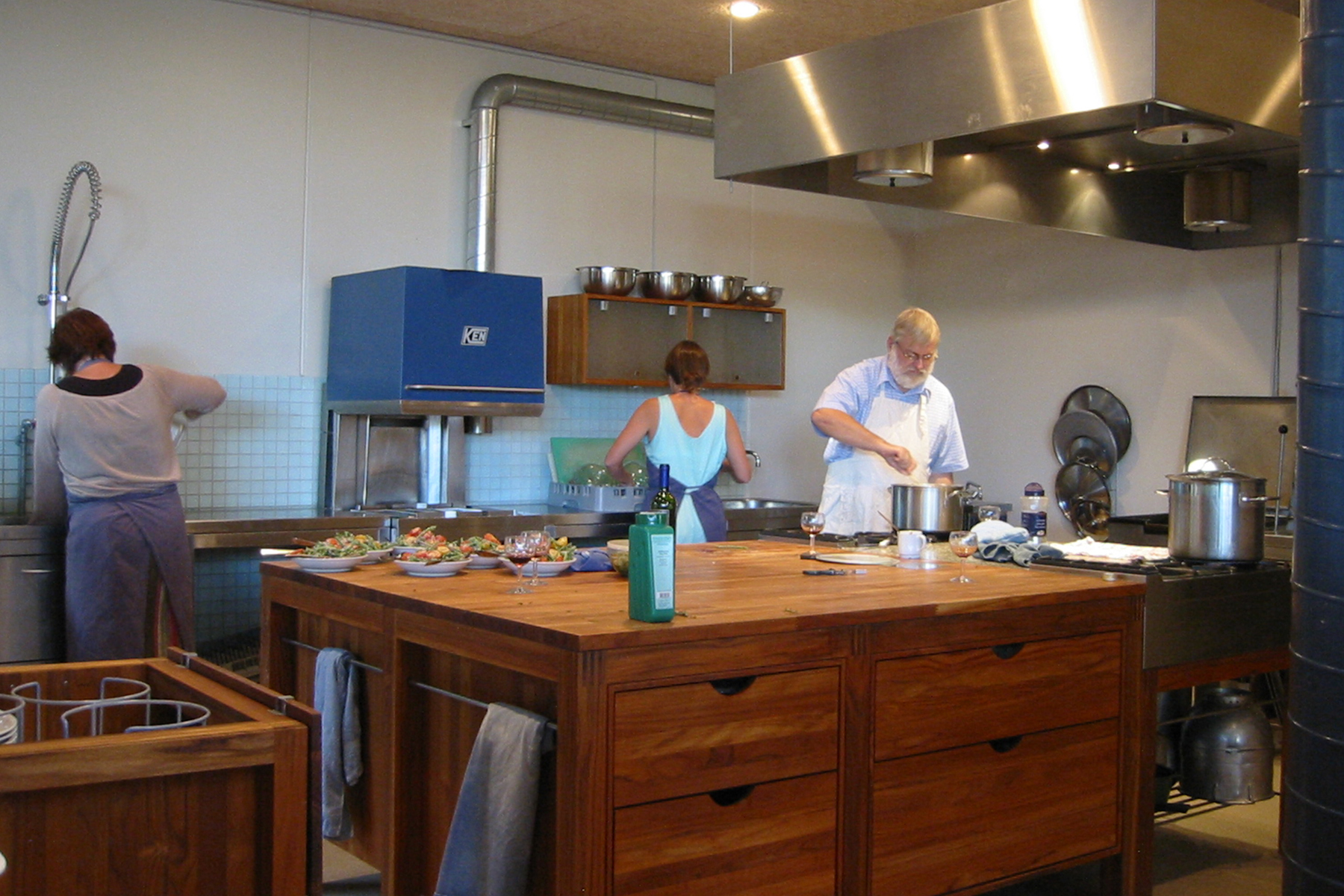The common house kitchen serves more than a purely utilitarian function - it provides a vital place for residents to work together, collaborate, and socialize.
“…it is essential that the cooking area be fashioned as a workshop for the preparation of food…. No need for the counter to be continuous or entirely built-in…it can even consist of free-standing tables and counter tops.”
The kitchen should be designed with the typical number of cooks in mind. This pattern identifies four main elements in a kitchen: stove, sink, food storage and counter. No two should be more than 10’ apart; total length of counter should be at least 12’; and no single section of counter should be less than 4’ in width.
Galley kitchens open to the dining room work for smaller cooking groups such as Overblik, Blikfanget and Sættedammen. A central work island accommodates larger cooking groups - Savværket and Leerbjerg Lod had central work surface, while Kæphøj, Trudeslund, Stavnsbåndet & Ibsgården had a central stove top. Bakken, Kilen, Munksøgård, Ådalen, and Drivhuset had separate cooking & cleaning areas to facilitate circulation flow.





Please Note:
This series of blog posts is focused on explaining common design patterns in cohousing. Grace Kim, a founding principal and owner of Schemata Workshop, has identified patterns applicable to cohousing from "Pattern Language" by Christopher Alexander and has added some of her own.
Grace's additional patterns pay particular attention to the Common House because its design requires special consideration. As the living room for the community, the Common House sets the initial impression for visitors about what cohousing is, what your community values might be, or the perceived benefits of living in community. Schemata Workshop has analyzed scores of common houses in Denmark and North America to discern what does and does not work. Following Alexander's concept of Pattern Language, Grace has thoroughly documented the necessary programmatic and design elements for a successful Common House.
To learn more about cohousing at Schemata, visit our cohousing page.

